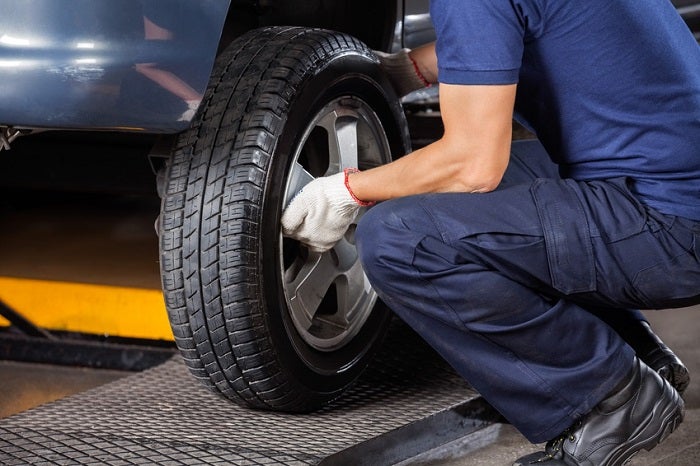Tire Solution: The Impact of Weather Conditions
When it concerns making sure ideal efficiency and security when driving, recognizing the effect of climate condition on tire solution is critical. From scorching warm to icy roadways, each weather condition element can considerably influence tire functionality and total driving experience. By delving into the results of varying weather on tires, drivers can obtain important insights that might improve their vehicle's efficiency and long life. In this conversation, we will discover the detailed connection in between weather condition conditions and tire service, clarifying the relevance of weather-specific tire upkeep practices and factors to consider.
Heat and Tire Performance
When subjected to heats, tires experience adjustments in efficiency that can dramatically impact vehicle safety and security and handling. The heat generated from long term driving or heat conditions causes the tire rubber to soften, resulting in reduced walk life and raised wear. As the rubber comes to be softer, the tire's grip on the roadway lessens, impacting braking distances and total grip. In extreme cases, extreme warm can even trigger tire blowouts, posing a serious safety danger to the automobile and its residents.

Cold Weather Effects
Cold weather condition conditions can have a significant effect on tire efficiency and safety. In cold weather, tires may likewise shed air pressure more quickly, which can affect taking care of and gas effectiveness.
To mitigate the impacts of chilly climate on tires, it is vital to consistently examine tire stress and inflate them to the supplier's suggested degrees. Utilizing wintertime or all-season tires developed for winter problems can likewise improve traction and grasp on icy or snowy roads. Appropriate tire upkeep, including regular assessments for wear and damages, ends up being also extra crucial during colder months to guarantee optimum efficiency and safety and security.
Rainy Issues Influence
Throughout stormy conditions, tire efficiency and safety and security can be significantly affected by the damp road surfaces and lowered presence. The step pattern of tires plays an important function in keeping grip on wet roadways. Tires with worn-out treads are a lot more vulnerable to hydroplaning, where a layer of water accumulates in between the road and the tire surface, causing loss of traction. To battle this, motorists should on a regular basis check their tires for appropriate tread depth and take into consideration investing in tires particularly made for his response damp conditions.
In addition, rainy weather condition can additionally decrease presence, making it challenging for motorists to see the road in advance clearly (GMC Tire Service). In such problems, it is vital to change driving rates accordingly and maintain a risk-free following range to permit abrupt stops. Effectively inflated tires can also assist in maintaining control on damp roads by supplying far better handling and grip
Snow and Tire Safety
Snow-covered roadways position unique challenges for vehicle drivers, emphasizing the relevance of proper tire choice and upkeep. When driving in snowy conditions, having the ideal tires can make a considerable difference in safety and security and performance. Winter months tires are made with unique rubber compounds and step patterns to provide far better traction on snow and ice compared to all-season tires. The much deeper footsteps and sipes of wintertime tires assist hold the road much better, reducing the risk of sliding and sliding.

It is vital to comply with supplier directions when installing and using tire chains to prevent damages site here to the tires and vehicle. By choosing the ideal tires, keeping appropriate rising cost of living, and considering added grip aids like tire chains, chauffeurs can boost their security when navigating snow-covered roadways.
Weather-Related Tire Maintenance
Weather-related tire maintenance incorporates a variety of techniques aimed at ensuring optimal tire feature and long life in various weather condition situations. One key element of weather-related tire maintenance is tire pressure guideline. Inspecting tire tread regularly and replacing tires when walk wear gets to a particular depth is essential for keeping grip and stability in adverse weather condition.
Conclusion
In conclusion, weather have a substantial effect on tire efficiency and safety and security. From heat impacting tire stress and put on to cool weather condition lowering grip, it is necessary to take into consideration the weather when preserving and utilizing tires. Wet problems can lower grip and lead to hydroplaning, while snow can enhance the threat of accidents if tires are not effectively furnished. Weather-related tire maintenance is important in ensuring optimum efficiency and safety and security when traveling.
In this discussion, we will certainly explore the content intricate relationship between weather conditions and tire solution, dropping light on the importance of weather-specific tire maintenance methods and factors to consider.
